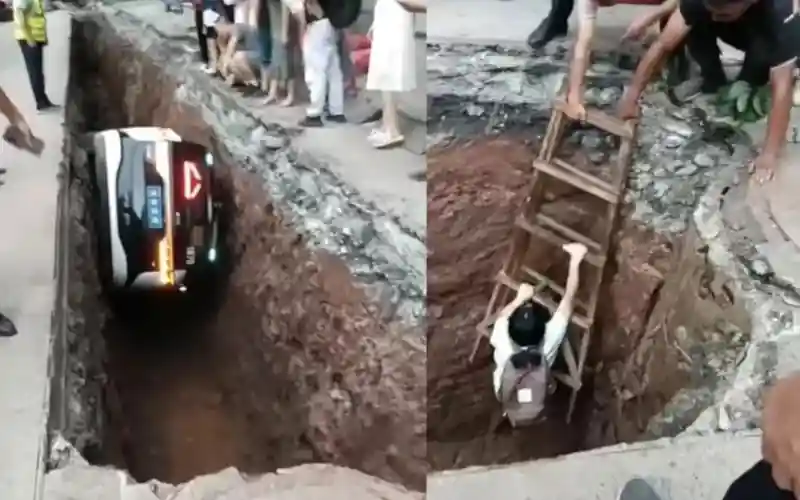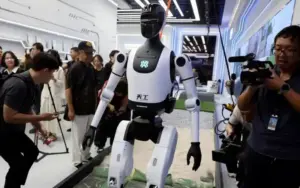Baidu Robotaxi Incident Sparks Safety Debate

- A Baidu robotaxi carrying a passenger recently fell into a construction pit in Chongqing, China.
- The incident, which left the passenger uninjured, has ignited widespread discussion about the safety of autonomous vehicles.
A self-driving vehicle from Baidu’s Apollo Go service recently fell into a deep construction trench in Chongqing, China, according to local news reports. The incident happened on Wednesday and involved a passenger who, fortunately, escaped unharmed. The individual was safely rescued from the pit by local residents using a ladder. Videos shared on Chinese social media showed the white Baidu Apollo car at the bottom of the trench.
A local shop owner told the Huashang Newspaper that the construction site had visible warning signs and barriers. It remains unclear how the autonomous vehicle managed to bypass these safety measures and drive into the hazardous zone. Baidu has not yet provided an official statement regarding the incident. The incident has led to extensive debate on Chinese social media platforms regarding the safety protocols and reliability of robotaxi services.
Context of the Robotaxi Market
Baidu is a significant player in China’s autonomous vehicle sector, operating one of the country’s largest fleets. The company currently provides commercial robotaxi services in several major cities, including Wuhan, Beijing, and Chongqing. Baidu has also been actively working to expand its presence internationally. This expansion includes recent partnerships with U.S. ride-hailing companies Uber and Lyft.
The recent incident is not the first time a Chinese autonomous vehicle company has faced public scrutiny. In May, a rival service, Pony.ai, drew attention after a video of one of its cars on fire circulated online. The company later stated that the fire occurred during servicing following a system malfunction and that no passengers were present. These events highlight the ongoing challenges and public concerns surrounding autonomous vehicle technology.
Global Safety Incidents
Discussions about the safety of robotaxis are not limited to China. Last year, a Waymo robotaxi in San Francisco became a subject of debate after it drove into a street filled with a crowd and was subsequently set on fire. That incident raised questions about the ability of self-driving cars to navigate and make decisions in complex, unpredictable social situations. The Chongqing event underscores a different kind of safety challenge: a vehicle’s ability to recognize and respond to physical barriers and construction hazards.
Such incidents prompt critical examination of the current state of autonomous technology. While the industry aims for full autonomy, each new event serves as a reminder of the inherent complexities and potential risks. Developers continue to work on improving sensor technology and AI decision-making. However, the public and regulatory bodies alike are watching closely, expecting robust solutions to ensure passenger safety and public trust.
Did You Know?
|








